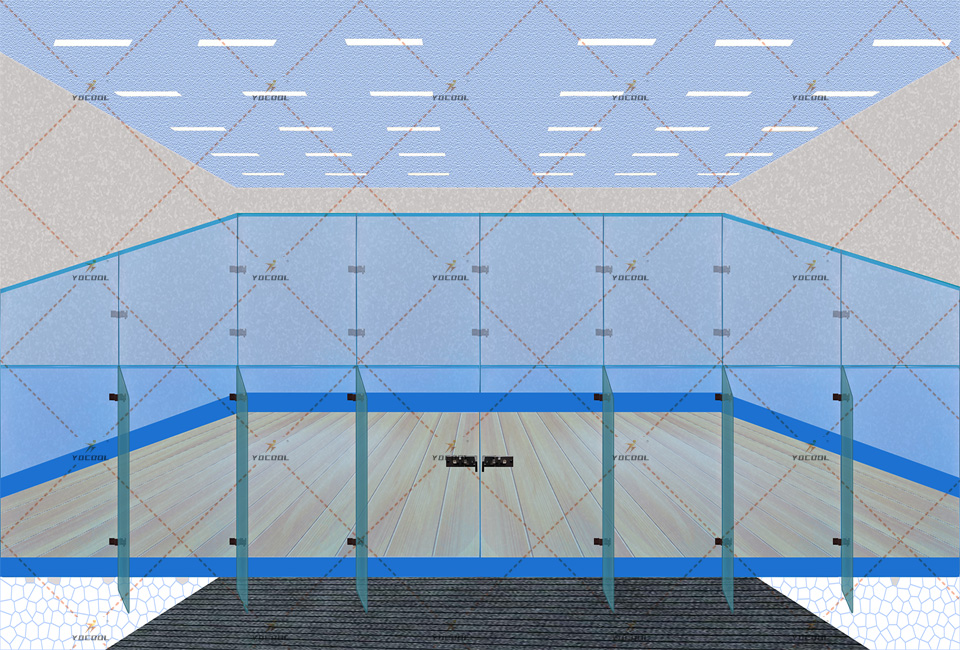

Exploring the Exciting World of Paddle Court (Padel de Cancha)
Padel, a dynamic racquet sport that has been gaining immense popularity over the last few decades, combines elements of tennis and squash, providing an exhilarating experience for players of all ages and skill levels. One of the most critical components of this sport is the paddle court or padel de cancha, which is specially designed to enhance the gameplay and accommodate the unique characteristics of padel.
The paddle court is typically enclosed by glass walls, allowing for a three-dimensional play area that distinguishes padel from traditional tennis. Measuring 20 meters long and 10 meters wide, the court is smaller than a tennis court, which contributes to the fast-paced nature of the game. The walls play an integral role; they are not merely barriers but active components of the game, as players can hit the ball off them, allowing for innovative shot-making and strategic play.
The surface of a padel court is usually made of artificial turf, which provides excellent grip and reduces the risk of injuries. It's common to find courts with a porous layer beneath the turf, which ensures proper drainage during rainy conditions, making the courts playable year-round. The choice of surface also affects the speed of the game – for example, a slower surface can lead to longer rallies, while faster turf can expedite points, showcasing different playing styles and strategies.
In addition to being suitable for recreational play, the design of the paddle court enables thrilling tournaments. The enclosed space encourages spectators to engage closely with the action, creating an electrifying atmosphere during competitive matches. The sport's rising popularity in countries like Spain and Mexico has led to numerous professional circuits, showcasing top athletes who have elevated padel to new heights.

Another advantageous feature of paddle courts is their versatility. They can be built in various environments, from urban settings to more secluded locations, ensuring that they are accessible to a broad audience. Many cities have embraced padel, transforming public parks and recreational centers into popular sporting hubs, where enthusiasts can gather to play, socialize, and improve their skills.
Safety is also a priority in the design of paddle courts. The glass walls, typically made with tempered safety glass, minimize the risk of injury while allowing players a clear view of the ball's trajectory. The court's layout and surface further reduce the likelihood of falls and accidents, making it a secure environment for players of all ages.
As padel continues to grow, so does the community surrounding it. Regional clubs and associations often host events, classes, and social gatherings, creating a sense of camaraderie among players. Whether you are a seasoned athlete or a novice, the welcoming environment in padel clubs encourages participation and fosters a love for the game.
In conclusion, the paddle court, or padel de cancha, is essential to the charm and appeal of padel as a sport. Its unique design elements not only enhance the gameplay experience but also contribute to the growing popularity of the sport. With continuous investment in facilities and an expanding community, padel is poised to become a leading sport for years to come, captivating players and fans around the globe. The inclusive nature of padel makes it clear that anyone can pick up a racket and enjoy the thrill of the game in their local padel court, making it a sport that truly unites people through the joy of play.
High-Performance Industrial Flooring Solutions China Paddle Tennis Court for Sale
High-Performance Industrial Flooring Solutions Durable & Cost-Effective
Homogeneous Transparent Floor – Durable & Stylish Rubber Floor Solutions
Premium Homogeneous Transparent Floor for Durable & Stylish Spaces Rubber Floor Solutions
Premium Sports Floor Solutions Durable PVC Sports Floor & Rubber Floor for Gyms
Durable Rubber Composite Floor Premium Rubber Floor & Mats Solutions